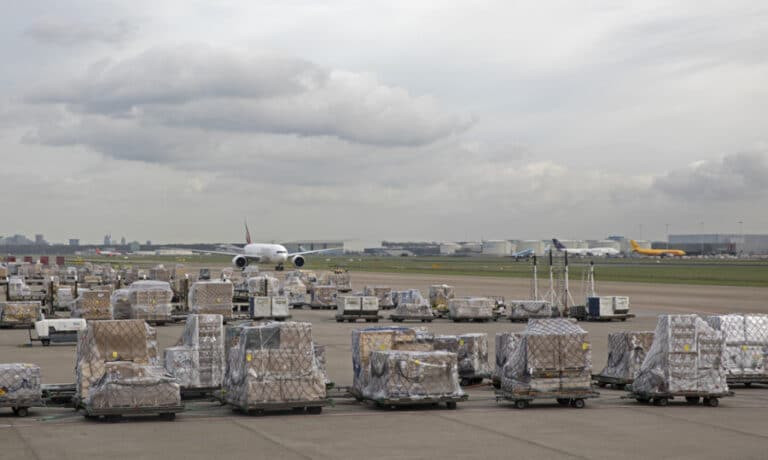Cargo volumes continue to grow across the Benelux region, with new game-changing cargo sources emerging out of Asia and ongoing challenges as airports face growing capacity constraints, writes Donald Urquhart.
Across the Benelux region, like much of the world, 2017 was a good year. For Liege Airport it was a record year. And it is by now, a not unfamiliar story – relatively flat volume growth until about August when things began to change. From September onwards, Liege posted record month after record month all the way through to April 2018.
“The market has continued to be strong and Liege Airport is still surfing on the increased demand wave. Our first four months were the best in the history of the airport, by a long way, and we sure hope it continues,” says Liege Airport vice president commercial, Steven Verhasselt

The business was driven both by growth from existing players and the addition of new services. Similarly, over at Brussels Airport, cargo volumes grew by 8.3 per cent in 2017, although the loss of some main deck capacity resulted in a slight dip in full cargo volumes in Q2 of 2018. Its traditional core strength in pharma was also up 20 per cent.
“We had a good start this year and due to all the extra flights we already have and the ones we expect to materialise in the near future, 2018 should again be a good year for us,” says Brussels Airport Company head of cargo and logistics, Steven Polmans.
The airport attracted new capacity recently, with Emirates operating double daily B777 passenger aircraft, along with Hainan Airlines adding routes to Shanghai and Shenzhen. Together with the start of Cathay Pacific, this translates to a considerable increase in belly capacity, Polmans notes.
On the full cargo side, Brussels welcomed some extra weekly Singapore Airlines Cargo flights, as well as LATAM and recently also Turkish Airlines.
A good start to the year indeed.
Meanwhile, at Amsterdam Schiphol Airport, where flowers still reign supreme, an uptick in cargo throughput saw total figures for January to December 2017 reaching 1.75 million tonnes.
In the first three months of 2018, the airport has seen a mixed bag in terms of its key markets, with Asia, Latin America up, Africa mixed and European, North American and Middle Eastern trade down in Q1, year-on-year.
But for Schiphol the most significant factor were the full freighter volumes, which overall were down 2.4 per cent, with 7.4 per cent fewer full freight air traffic movements (ATMs). On top of this belly cargo volumes eased slightly, showing a 1.6 per cent drop compared with Q1, 2017.
Of course for Schiphol, the well known problem is the constraint on air traffic movements which continues to have a deleterious effect on the expansion of full freighter flights.

“We see growth opportunities in combining cargo with belly capacity,” says Cargo@Schiphol director of business development Bart Pouwels. He notes that more and more network planners are looking at cargo when planning new passenger routes. To that end Schiphol has created a tool that shows airlines the potential of additional cargo on intercontinental routes to help the planners understand the benefits which additional cargo can bring and what aircraft to operate on a route.
The reduction in full freighter has had a “knock-on effect in our first quarter results, but there are nonetheless underlying positive growth trends in cargo business from China and Latin America that we hope to build upon over the coming year,” adds Pouwels.
There are of course beneficiaries of these constraints at Schiphol, namely Liege Airport. Verhasselt is quick to point out that it has had the same strategy – #freightersfirst – for many years and is not, in fact, a reaction to what is happening in other airports.
“All our customers, existing, new and future, have a strategy that needs what Liege can offer – 24/7 operations, flexibility, close to the market, both in distance and especially in time, are the key drivers. For freighter operators into this part of Europe, the cargo DNA of Liege Airport is a perfect match with their own,” Verhasselt says.
“We are in the sweet spot, but the requirements are much more than just being there. For oversize cargo, we have dedicated services, a close knit cargo community and experienced handlers, customs and customs agents, and trucking that minimise time to market.”
While China has been a key driver of volumes to the Benelux region for quite a number of years, its importance is clearly growing and growing rapidly. “China remains our largest market, with Shanghai our main destination,” says Pouwels.
“We see many e-commerce and high-tech shipments coming from China to the Netherlands and many e-commerce, luxury items and baby powder going out from the Netherlands to China.
“China, our largest country market, showed an increase of 2.1 per cent at 30,735 tonnes from January to March 2018, year-on-year, boosted by increased volumes from both freighter and belly cargo flights.”
Trade with the Asian continent overall remained relatively stable, with a four per cent decrease in inbound cargo to 67,629 tonnes but a one per cent increase in outbound cargo, up to 75,182 tonnes.



